Something most people don’t think about is the dangers of an unclean dryer vent in their Tucson home. Let’s break down what makes this so dangers and how to avoid it. In Tucson, Arizona, the hot, dry climate makes it especially important to keep your dryer vents clean. Unfortunately, many people don’t know the dangers of an unclean dryer vent, and they could be putting their home and family at risk.
If lint and debris build up in your dryer vent, it can create a fire hazard, as well as cause your dryer to work inefficiently. Not only can this cost you money in the long run, but it can also put your home and family in danger.
In this article, we’ll look at the dangers of an unclean dryer vent in Tucson, and discuss the steps you can take to ensure your dryer vent is clean and safe. We’ll also explore the anachronistic importance of having your vents professionally cleaned to avoid any potential disaster.
What Is A Dryer Vent and What Are the Dangers of Leaving it Unclean?
If you live in Tucson, Arizona, you know how hot it can get. With temperatures reaching over 100 degrees Fahrenheit in the summer months, it’s important to stay cool and comfortable. But, have you ever considered the danger of an unclean dryer vent? It may not seem like a big deal at first, but it can be a major danger to your health and safety.
A dryer vent is the pathway that your dryer uses to release the heat and moisture that it generates during the drying process. As your clothes dry, the heat and moisture escape through this vent into the outside atmosphere. Over time, the vent can become clogged with lint and other debris, blocking the air from escaping. This can be a major cause of fires, as the heat and moisture build up and create a hazardous environment.
It’s important to understand that a blocked dryer vent is like having a ticking time bomb in your home. Without regular cleaning and maintenance, the vent can become a ticking time bomb of heat and moisture, waiting to explode into a fire. Just like a fire needs fuel and oxygen to ignite, the lint and debris that accumulates in the vent can provide the fuel and the air trapped in the vent can provide the oxygen.
The best way to protect yourself and your family from the dangers of an unclean dryer vent is to keep it clean and clear. Regularly inspect and clean the vent to make sure that it is free of lint and debris. Doing this will help to ensure that your home is safe and your dryer is working as efficiently as possible.
Why Is Cleaning A Dryer Vent Necessary?
Cleaning a dryer vent is an important part of homeownership in Tucson. As the saying goes, “An ounce of prevention is worth a pound of cure”, and that’s certainly true with dryer vents. If you neglect to clean your vent, you could be putting your home – and your family – at risk.
A buildup of lint in your dryer vent can lead to a number of dangerous issues. Not only can it restrict airflow, which can cause your dryer to overheat, it can also be a fire hazard. The lint is highly flammable, and it can easily catch fire if it’s not removed. Additionally, a clogged dryer vent can cause carbon monoxide to enter your home, putting your family in danger.
Cleaning a dryer vent is an easy process, and the benefits are great. Not only will it help to keep your family safe, but it can also help your dryer to run more efficiently. This can save you money on your energy bill and extend the lifespan of your appliance.
It’s important to have dryer vent cleaning service in Tucson on a regular basis, at least once a year. If you live in a dusty climate, such as Tucson, you may need to clean your vent more often. This will help to keep your dryer running smoothly and your home safe. Don’t wait until it’s too late – take the time to clean your dryer vent today.
What Are The Risks Of An Unclean Dryer Vent In Tucson?
The buildup of lint and debris in your dryer vent is a serious issue that should not be taken lightly. In Tucson, the risks of an unclean dryer vent are even greater due to the extreme temperature shifts that are common in the area. Without regular maintenance and cleaning, the buildup of lint and debris can become a fire hazard.
When heated for drying clothes, lint and debris can easily ignite, creating a rapid and destructive fire. In addition, an unclean dryer vent can block air flow, making your dryer run inefficiently and potentially overheat. This can lead to costly repairs and higher energy bills.
In Tucson, the hot and dry climate can also make an unclean dryer vent even more dangerous. The lint and debris inside the vent can act as kindling during the hot summer months and create a fire hazard.
Finally, a clogged dryer vent can cause carbon monoxide poisoning, which is especially dangerous in Tucson due to the lack of humidity. Carbon monoxide, a colorless and odorless gas, is released when the dryer is unable to effectively ventilate. This gas can cause serious health issues, including dizziness, headaches, and even death.
For all of these reasons, it is essential to keep your dryer vent clean and free of lint and debris. Regular maintenance and cleaning will help to ensure that your dryer is running safely and efficiently.
TIP: To prevent any potential risks, make sure to clean your dryer vent at least once a year, and more often if you do a lot of laundry. This simple task can help to keep your family safe and healthy, and your dryer running smoothly.
How Does Lint Build-Up Occur In A Dryer Vent?
When it comes to the risks of an unclean dryer vent in Tucson, one of the most common causes of lint build-up is neglect. In a city with a dry climate, it’s easy to forget to pay attention to the maintenance of your dryer vents. Unfortunately, this can be disastrous if you don’t take the time to clean the lint build-up out of your vents.
Take the case of the Johnson family. They lived in Tucson for over seven years, but they never paid attention to their dryer vents. As a result, the lint build-up over the years caused the dryer to overheat and eventually burst into flames. The fire spread throughout the house, leaving the family devastated.
Lint build-up occurs when the air from your dryer escapes through the vents and mixes with the lint, dust, and pet hair that accumulate in the dryer’s lint trap. This build-up of lint can become so thick that it blocks the dryer vent and prevents the air from escaping. This can cause your dryer to overheat, leading to fires or other safety hazards.
It’s important to regularly inspect and clean your dryer vent to make sure the air can flow freely. This can be done by either hiring a professional to clean the vents or by doing it yourself. It’s also important to clean the lint trap after every load of laundry to help prevent lint build-up.
By taking the time to inspect and clean your dryer vent, you can help to ensure that your home is free from the dangers of an unclean dryer vent. Taking the time to inspect and clean your dryers vents can help to keep your family safe and your home free from the risks of lint build-up.
Signs You Need To Clean Your Dryer Vent
When it comes to keeping your dryer vent in Tucson clean, it’s important to look out for signs that it may be in need of a deep clean. Here are some indicators that your dryer vent could be clogged and need a good scrub:
* Poor Dryer Performance:
– Your clothes are taking much longer to dry than usual.
– Your dryer is running much hotter than normal.
– Clothes coming out of the dryer are excessively hot and/or damp.
* Visible Lint:
– You can see lint and/or dust in your dryer vent and/or lint trap.
– You can see a large buildup of lint on the outside of your dryer vent.
* Unusual Sounds:
– You can hear a whistling noise coming from your dryer vent.
– You can hear a rumbling or vibrating sound coming from your dryer.
– You can hear a rattling noise coming from the inside of your dryer.
If you notice any of these signs, then it’s important to clean your dryer vent as soon as possible. Not only will this help to keep your dryer running efficiently, but it can also help to prevent a potential fire hazard. Taking the time to clean your dryer vent can be a simple and effective way to protect yourself and your family.
The Dangers Of Carbon Monoxide Poisoning From An Unclean Dryer Vent
One of the most serious dangers of having an unclean dryer vent in Tucson is the risk of carbon monoxide poisoning. Carbon monoxide is an odorless and colorless gas that is produced when burning fuel such as gas or oil. When a dryer vent is clogged, it can trap the carbon monoxide and put your family at risk of exposure.
In Tucson, carbon monoxide poisoning can be particularly hazardous due to the city’s high temperatures. Carbon monoxide gas becomes more concentrated in hot weather, creating an even greater risk of exposure. Symptoms of carbon monoxide poisoning can include headaches, dizziness, confusion, nausea, and even death.
Having an unclean dryer vent can be like playing a game of Russian roulette with your family’s health. The longer the vent is left clogged, the greater the risk of exposure to dangerous gases. It’s important to be aware of the signs that you need to clean your dryer vent, and to take action as soon as possible to eliminate the risk.
Think of your dryer vent like a ticking time bomb. The longer it goes unchecked, the greater the risk of a dangerous explosion. Don’t let your vent become a ticking time bomb, and take the necessary steps to keep your family safe. Cleaning your dryer vent regularly is the best way to ensure that your family is safe from the dangers of carbon monoxide poisoning.
How To Prevent Lint Build-Up In Your Tucson Home’s Dryer Vent
Living in Tucson, lint build-up in your home’s dryer vent can be a real hazard. While it’s tempting to think that you can just ignore the problem and hope it goes away, the reality is that the longer you let lint build-up in your dryer vent, the greater the risk of carbon monoxide poisoning becomes.
Fortunately, there are several simple steps you can take to prevent lint build-up in your Tucson home’s dryer vent. First, make sure you clean the lint filter after every cycle. This will help to reduce the amount of lint that accumulates in the vent over time. You should also vacuum around the exterior of the dryer on a regular basis to remove any dust or debris that has accumulated.
Another way to reduce the build-up of lint in your dryer vent is to consider investing in a dryer vent cleaning kit. These kits typically include a brush that is designed to remove lint from the inside of the vent, as well as a vacuum attachment that can be used to suck out any lint that has accumulated on the outside of the vent.
Finally, it’s important to have your dryer vent professionally inspected on a regular basis. A qualified technician will be able to identify any potential fire hazards, as well as any areas where lint may be building up. This will help to ensure that your dryer vent remains safe and efficient.
While it may seem like a hassle to keep your dryer vent clean and lint-free, it’s an important step in preventing carbon monoxide poisoning in your Tucson home. By taking proactive steps to keep your dryer vent clean, you can help to keep your family safe from the dangers of an unclean dryer vent.
Tips For Cleaning Your Own Tucson Home’s Dryer Vent
If you’re a Tucson homeowner, you may have noticed that your dryer vent is starting to become filled with lint. Not only can this be dangerous for your dryer, but it can also be a fire hazard. Fortunately, taking the time to clean your dryer vent yourself is surprisingly easy, if you know what you’re doing. Here are a few tips to keep your dryer vent clean and lint-free.
The first step to cleaning your dryer vent is to unplug the dryer from the wall. This will ensure that you don’t get shocked during the cleaning process. After that, you’ll want to check the vent to see if there are any clogs. If you notice a clog, you can use a vacuum cleaner to remove it. If the clog is too tough for the vacuum, you can try using a long-handled brush to clear it out.
Once you’ve cleared the vent, you’ll want to locate the hose that runs from the dryer to the wall. This is usually located behind the dryer, and it’s important to make sure that it’s free from any blockages. If the hose is blocked, you’ll want to use a long flexible brush to clear it out.
Finally, you’ll want to make sure that you inspect the area around the vent for any lint build-up. It’s important to remove any lint that you can find, as it can be a fire hazard. Once you’ve done that, you’ll be all set!
By taking the time to clean your Tucson home’s dryer vent, you can help to reduce the risk of a fire. Not only is this a great way to keep your family safe, but it’s also a great way to make sure that your dryer is running efficiently. So the next time you notice a clog in your dryer vent, you’ll know exactly what to do.
When Should You Hire A Professional For Your Tucson Home’s Dryer Vent Cleaning?
When it comes to your Tucson home’s dryer vent, it’s important to be aware of the dangers of an unclean vent. To illustrate the importance of professional cleaning, let’s imagine a house fire as an allegory for an unclean dryer vent.
It starts off as a small spark, almost unnoticeable, but left unchecked it can quickly grow into a raging inferno. Similarly, small lint buildups in your dryer vent can quickly become a major fire hazard if not taken care of. Just like a fire, an unclean dryer vent can cause major damage to your home, and even lead to injury or death.
To prevent this from happening, it’s best to hire a professional to inspect and clean your Tucson home’s dryer vent. Professionals will be able to identify potential fire hazards and remove any lint buildup that could cause a fire. They will also be able to suggest ways to improve the efficiency of your dryer vent, such as adding extra ventilation or replacing old ducts.
Overall, it’s important to take the time to inspect and clean your dryer vent regularly. If you ever feel unsure of what to do, it’s best to hire a professional to ensure the safety of your home. By taking the time to invest in a professional dryer vent cleaning in Tucson, you’ll be able to rest easy knowing that your Tucson home is safe from the dangers of an unclean dryer vent.
Common Causes Of Blockages In The Dryer Vents Of Tucson Homes
When it comes to the safety of your Tucson home, it’s important to be aware of the potential dangers of an unclean dryer vent. One interesting statistic to consider is that nearly 14,000 home fires are caused by clogged dryer vents in the United States each year. That’s why it’s so important to take steps to clean and maintain your dryer vent on a regular basis.
Common causes of blockages in the dryer vents of Tucson homes vary, but some of the most common culprits are lint, dust, and debris. Over time, these small particles can accumulate in the vent, resulting in a blockage. Additionally, animals such as birds, rodents, and insects can sometimes build nests in the vents, resulting in a dangerous and potentially hazardous situation.
It’s also important to note that dryer vents made of plastic or aluminum are more prone to blockages than those made of metal. Plastic and aluminum are not as durable and can easily become clogged with lint, dust, and other small particles. In some cases, dryer vents may even become blocked due to faulty design or installation.
By understanding the common causes of blockages in the dryer vents of Tucson homes, you can take steps to prevent them. Cleaning your dryer vent on a regular basis is the best way to keep it free from blockages and other potential hazards. Additionally, you may want to consider hiring a professional for your Tucson home’s dryer vent cleaning, as they will be able to identify any potential issues and take the necessary steps to ensure the safety of your home.
The Benefits Of Regularly Cleaning And Inspecting Your Tucson Home’s Dryer Vents
When it comes to living in Tucson, it pays to be aware of the danger of an unclean dryer vent. Not only is it a potential fire hazard, but it can also lead to blockages that can significantly reduce the efficiency of your dryer. Thankfully, regularly cleaning and inspecting your dryer vents can help to ensure that these issues don’t arise.
The benefits of keeping your dryer vents clean and clear are manifold. Not only will it drastically reduce the risk of fire, but it will also help to keep your energy bills low. Clogged vents can cause your dryer to work harder than it needs to, which in turn can lead to a higher energy bill. Keeping your dryer vents cleaned and inspected can help to keep your energy bills in check.
Additionally, keeping your dryer vents clean and clear can help to reduce wear and tear on the appliance itself. Clogged vents can cause the dryer to overheat and can cause its internal components to become damaged over time. By taking the time to regularly clean and inspect your dryer vents, you can keep your dryer running smoothly and prolong its lifespan.
When it comes to protecting your Tucson home from the dangers of an unclean dryer vent, prevention is the best medicine. Taking the time to regularly clean and inspect your dryer vents can help to keep your home safe, your energy bills low, and your dryer running smoothly. Consider it an investment in the future of your home, for the assurance of a safer and more efficient home today.
How Can You Tell If Your Tucson Home’s Dryer Vents Are Not Properly Installed Or Maintained?
When it comes to dryer vents in Tucson, the stakes are high. Without proper installation and maintenance, these vents can become clogged with lint and debris, leading to an increased risk of fire and other hazardous issues. Knowing how to spot the signs of improper installation or maintenance is key to keeping your family and home safe.
If you notice any of the following signs, it could be an indication that your dryer vents are not properly installed or maintained:
- Unusually long drying times. If your laundry takes longer than usual to dry, it could be due to a clogged ventilation system.
- Unpleasant smell. If you start to notice a musty smell when running your dryer, it could be due to lint buildup in the vent.
- Unusual noises. Rattling or vibrating noises when running your dryer could be a sign of an improperly installed vent.
- Excessive lint buildup around the dryer. Excessive lint accumulation around the dryer, or in the room where the dryer is located, is a telltale sign that the vents are not properly installed or maintained.
If you notice any of these signs, it’s important to call a professional to inspect and clean your dryer vents as soon as possible. Taking the time to ensure that your dryer vents are properly installed and maintained can save you from a hazardous situation and give you peace of mind. Knowing the warning signs is the first step in keeping your Tucson home safe and secure.
What Are The Costs Associated With Professional Cleaning And Maintenance Of Your Tucson Home’s Dryer Vents?
As a Tucson homeowner, you may be wondering how much it will cost you to have your dryer vents professionally cleaned and maintained. The answer depends on a variety of factors, such as the type of system you have, the size of the vents, the extent of the blockage, and the accessibility of the area. Generally, however, the cost of professional dryer vent cleaning and maintenance is relatively affordable.
Professional dryer vent cleaning and maintenance typically involves removing any lint or debris that has accumulated in the vent, as well as inspecting and cleaning the vent hood, vent cover, and any other components. If any damage or blockage is found, the technician may need to repair or replace the affected parts. Additionally, they may need to access hard-to-reach areas, such as behind walls or ceilings, which may require additional time and effort.
The overall cost will vary depending on the complexity of the job, but it is usually worth the investment. Not only will it help to prevent a fire, but it can also reduce energy costs and improve the efficiency of your dryer. So, if you’re asking yourself, “What are the costs associated with professional cleaning and maintenance of my Tucson home’s dryer vents?”, the answer is that it’s an investment worth making.
When Should You Call Emergency Services For An Unclean Or Clogged Dryer Vent In Tucson?
If you live in Tucson, there are several instances where you should call emergency services for an unclean or clogged dryer vent.
Here are 4 signs that indicate you should call for help:
1) Excessive heat or smoke coming from the dryer vent.
2) An unpleasant burning smell coming from the dryer vent.
3) A buildup of lint in the dryer vent.
4) Your dryer is taking longer than normal to dry clothes.
If you experience any of these signs, it’s important to call for professional help as soon as possible. A clogged or unclean dryer vent can be a serious safety hazard, and can lead to property damage or even a fire. Don’t take the risk – if you think you may have an unclean or clogged dryer vent, call emergency services right away.
What Other Preventative Measures Can Be Taken To Ensure Unclogged And Clean Dryers Vents In Your Home In Tucson?
When it comes to keeping your dryer vent clean in Tucson, prevention is key. Taking the right steps will help to ensure that your dryer vent remains unclogged and clean, and that you don’t have to call emergency services.
The first step is to make sure that your lint trap is cleaned regularly. This simple preventative measure will help to reduce the amount of lint and debris that builds up in the dryer vent. It’s also important to check the outside of the dryer vent for any clogs or debris. If there’s any blockage, you can use a vacuum cleaner to clear it away.
You should also make sure to inspect the dryer vent for any signs of wear and tear. If you spot any holes, cracks, or other damage, you’ll need to contact a dryer vent professional to have it repaired. A clogged dryer vent can become a fire hazard, so it’s best to be proactive and have it fixed as soon as possible.
Finally, you should have your dryer vent inspected and cleaned professionally at least once a year. This will help to ensure that any clogs are removed, and that the vent is in proper working order.
Taking the right preventative measures can help to save you time, money, and potential danger. Keeping your dryer vent clean and unclogged in Tucson is the key to a safe and efficient laundry experience. With the right steps, you can make sure that your dryer vent remains in top condition for years to come.
Understanding The Dangers of an Unclean Dryer Vent in Tucson
The safety of your home in Tucson is of the utmost importance, and one of the most overlooked areas is the dryer vent. Cleaning the dryer vent is one of the best ways to avoid the dangers of an unclean dryer vent, such as fire hazards, carbon monoxide poisoning, and inefficient drying.
It is important to inspect and clean your dryer vent at least once a year to ensure the safety of your home. Regular inspections can help you identify blocked vents, lint buildup, and other problems that can be easily avoided with regular maintenance.
By regularly checking and cleaning your dryer vent, you can ensure that your dryer is working efficiently and safely. Taking the time to inspect and clean your dryer vent can save you time and money in the long run, and help keep your home safe and comfortable. The best option would be to call a company like Steamy Concepts for a professional dryer vent cleaning in Tucson.
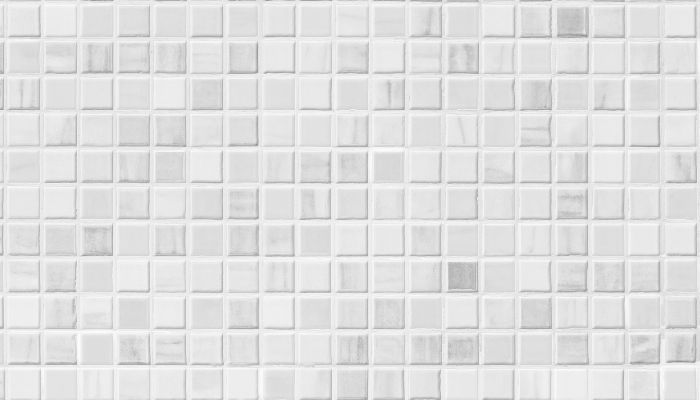
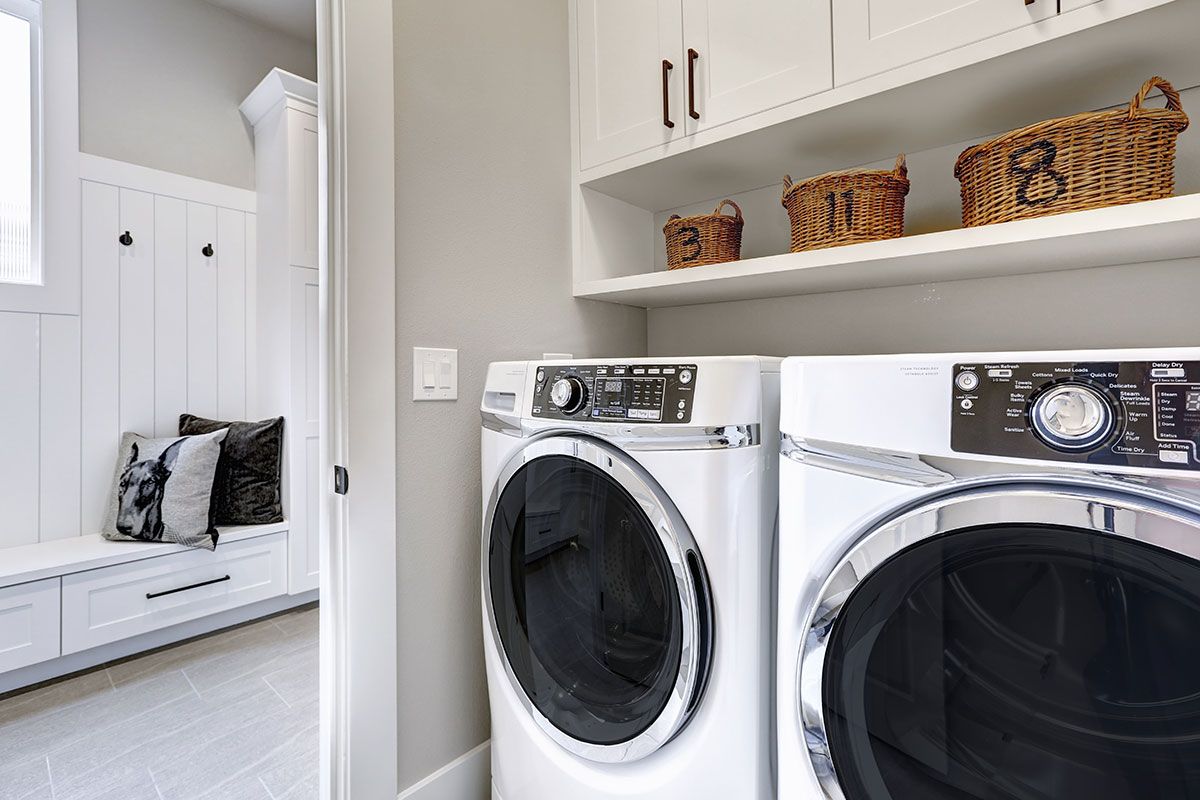

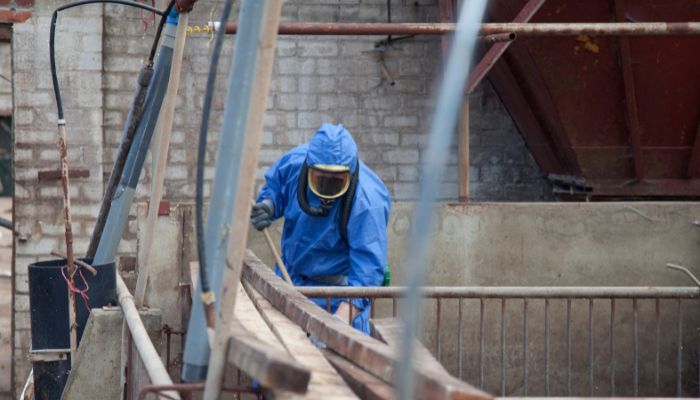
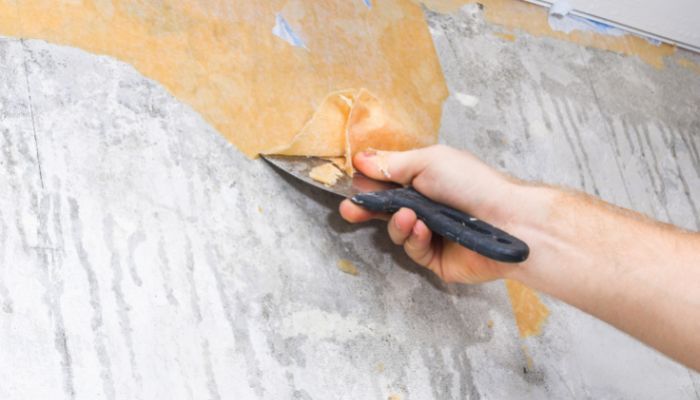


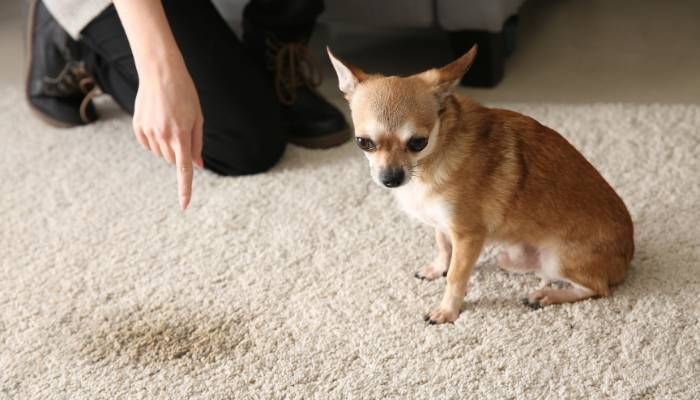
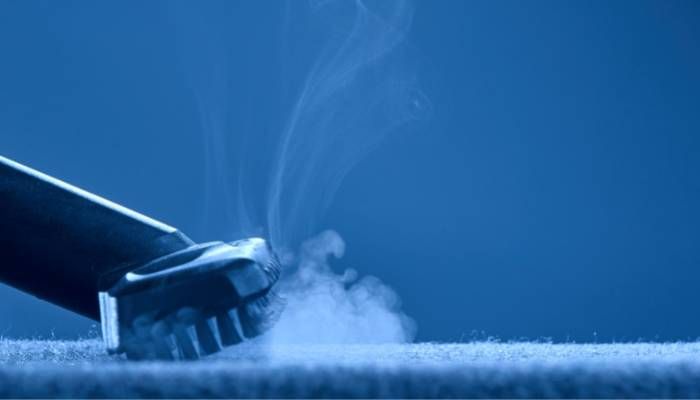
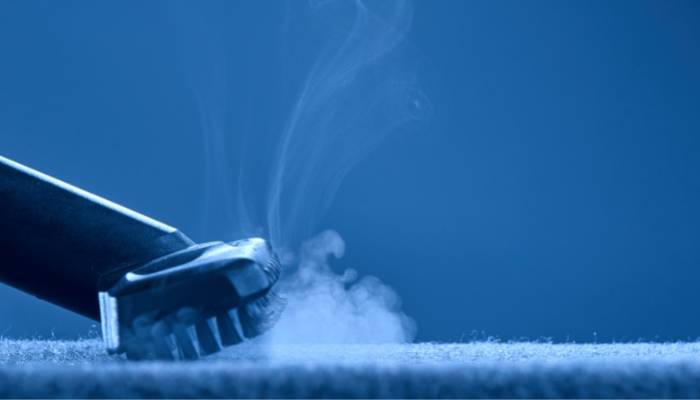 Maintaining overall home hygiene might be easier said than done, especially when it comes to carpet cleaning. Typically, carpets can be tricky to clean since the material they are made of is prone to collecting bacteria, debris, and dirt. Sometimes, a regular carpet cleaning is not enough to ensure its cleanliness.
Maintaining overall home hygiene might be easier said than done, especially when it comes to carpet cleaning. Typically, carpets can be tricky to clean since the material they are made of is prone to collecting bacteria, debris, and dirt. Sometimes, a regular carpet cleaning is not enough to ensure its cleanliness.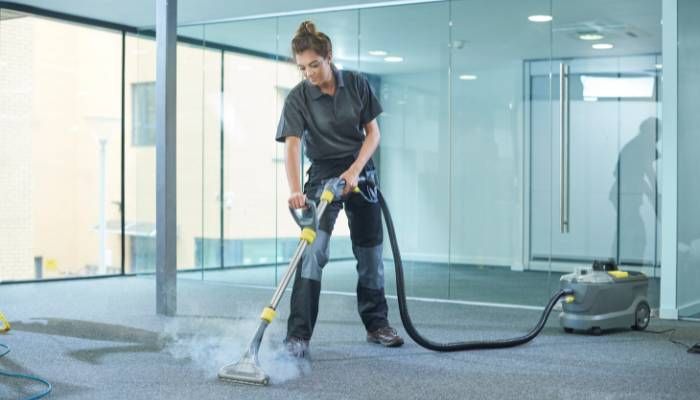
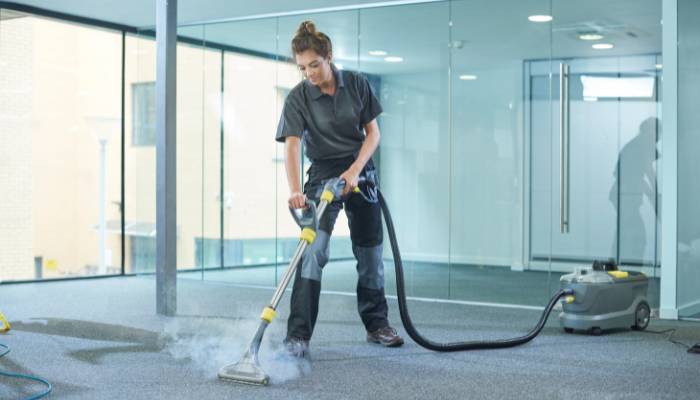 Every homeowner faces the challenge of maintaining their home clean. And while you may be keeping all the other parts of the house spotless, carpets require more dedication to clean properly. Carpets can be a nesting place for many germs and bacteria which may cause allergies and other health-threatening conditions.
Every homeowner faces the challenge of maintaining their home clean. And while you may be keeping all the other parts of the house spotless, carpets require more dedication to clean properly. Carpets can be a nesting place for many germs and bacteria which may cause allergies and other health-threatening conditions.